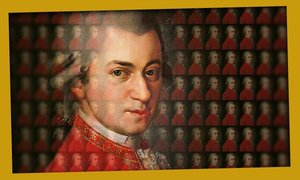Grand Hall:
Mozart: Symphony No. 29 in A major, K 201
Mozart: Piano Concerto No. 12 in A major, K 414
Featuring: Malcolm Bilson, Orfeo Orchestra
Conducting: György Vashegyi

Wolfgang Amadeus Mozart: Symphony No. 29 in A major, K 201
In the wake of a trip to Italy and a short sojourn in Vienna, autumn 1773 initiated a calmer period in the life of Mozart, spent in Salzburg. During this more than one year in his hometown, Mozart’s style was further enhanced, partly as a consequence of the evolution of the many musical impressions he acquired during his travels, and partly as a refinement of the style. One masterpiece from this time, often called the ‘Salzburg symphonies’ period in Mozart literature, is the Symphony in A major (1774). During the 1780s, he looked back on these works with considerable satisfaction, although it is interesting that his father Leopold was more critical as regards the symphonies. He wrote in 1778: “When a thing does you no credit, it is better forgotten. I have sent you back none of your symphonies because I am sure that when you come to riper years and have a clearer judgement you will be glad to forget them even if you are satisfied with them now. People become increasingly fastidious with age.”
Wolfgang Amadeus Mozart: Piano Concerto No. 12 in A major, K 414
Mozart set new standards for the genre with his piano concertos written in Vienna after 1782. When he appeared on stage as soloist of his piano concerto written earlier, he sensed the extraordinary reception and attempted to turn the favourable mood to his own benefit. In late 1782, early 1783, he completed three new piano concertos, among them the Piano Concerto in A major. “The concertos are somewhere between too difficult and too easy. They are very brilliant, pleasant to the ear, natural without being vapid. Here and there is a passage from which only connoisseurs can derive satisfaction, but arranged so that less sophisticated listeners are pleased, without knowing why,” he wrote to his father. The orchestra for the Piano Concerto in A major includes not only the strings but two oboes and two horns (optionally, two bassoons), although Mozart also considered it viable for the piano to be accompanied purely by a string quartet, therefore the work can be performed as a piano quintet.
The second movement is particularly noteworthy. It borrows its theme from an overture (La calamita de cuori) by Johann Christian Bach, whom Mozart much-admired and had met in London. Bach died in penury on 1 January 1782. “What a loss to the musical world,” wrote Mozart in a letter. The fellow composer was buried in an unmarked grave, his surname being incorrectly noted in the burial register as ‘Back’. Mozart dedicated the concerto’s Andante to the memory of Johann Christian Bach, thus it can be interpreted as a musical epitaph.
